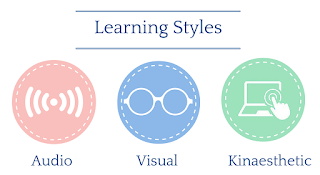LEARNING STYLES
According with Christison (2003), learning styles are individual’s natural habitual and preferred way of learning.
We can find some classical learning styles models according with different authors:
Myers-Briggs Type Indicator (1965)
In this one, the author details the following elements: Extroversion vs. introversion- Sensing vs. intuition
- Thinking vs. feeling
- Judging vs. perceiving
Grace Fernard’s VAKT (1943)
In this method, use the following styles- Visual
- Auditory
- Kinesthetic
- Tactile
Howard Gardner’s Multiple Intelligence Theory (1983)
This theory is focus on the relationship of a type of intelligence with certain capacity and perception:- Linguistic – related with words and language
- Logical-Mathematical – related with logic and numbers
- Musical – related with music, sound and rhythm
- Bodily-Kinesthetic – related with body movement control
- Spatial-Visual – related with images and space
- Interpersonal – related with other people’s feelings
- Intrapersonal – related with self-awareness
Learning Strategies
These are the operations used by the learners to develop their learning. The following strategies are focused on activities in order to improve learner’s development.
- Cognitive strategies
- Mnemonic strategies
- Meta-cognitive strategies
- Compensatory strategies
- Affective strategies
- Social strategies
And why we choose one of them? Because many factors influence in the choice. What influences strategy choice? We contemplate:
- Motivation
- Language learning environment
- Learning style and personality type
- Gender
- Beliefs
- Affective state
- Aptitude
- Culture or national origin
- Career orientation
- Age
- Nature of the language Task







Comentarios
Publicar un comentario